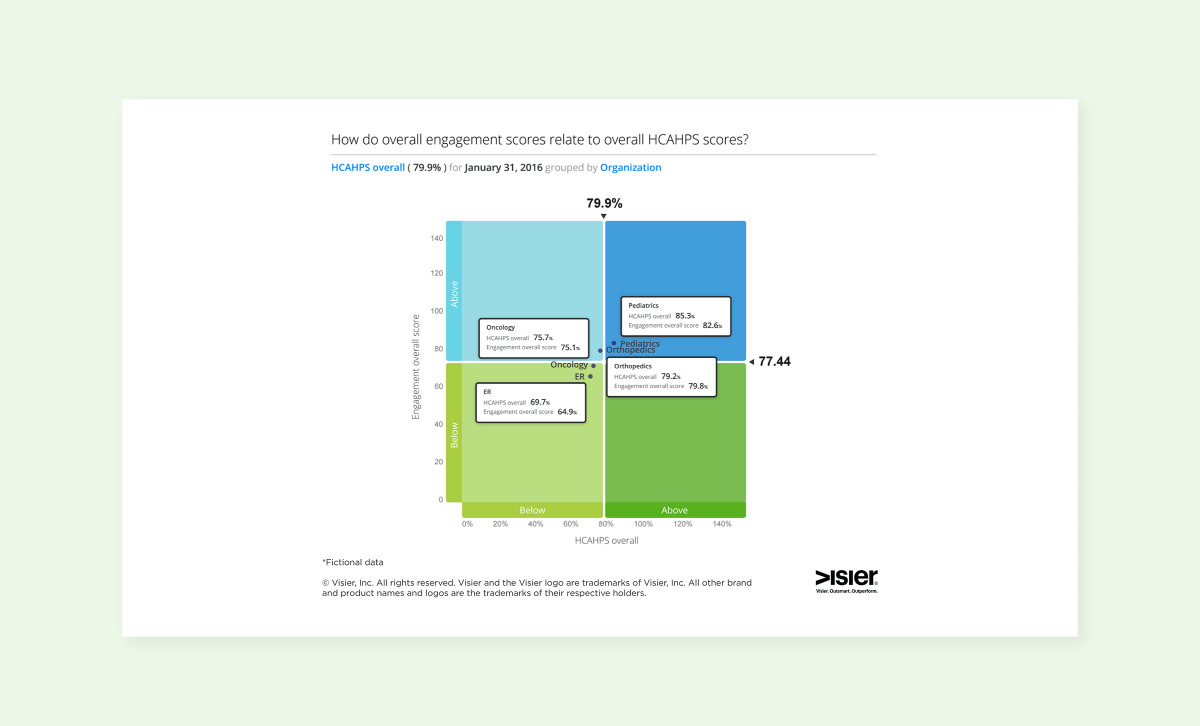What is HCAHPS and What Does it Mean for Healthcare Worker Engagement
How can healthcare providers use HCAHPS to improve employee engagement, so that they can continue to provide excellent care to patients?

The healthcare industry today is facing a perfect storm. On one hand, there has been unprecedented growth in demand for healthcare services: As many as 18 million more people have healthcare coverage today than did a few years ago. At the same time, the population is aging and people are living longer with chronic medical conditions: by 2030 more than 20% of US residents will be 65 or older, compared to 13% in 2010.
On the other hand, market and regulatory pressures require hospitals to continuously improve patient satisfaction and reduce costs and readmission rates to obtain full value from insurance reimbursements.
The biggest factor in both dimensions is the workforce: A highly specialized and very mobile group of skilled caregivers who are constantly in short supply.
Studies show that the workforce is vital to the bottom line for healthcare organizations: 86% of healthcare executives say talent plays a critical role in determining their patient satisfaction scores. This is why healthcare providers are more motivated today than ever before to measure, understand, and plan how they engage and retain their workers.
The Financial Health of Hospitals
Healthcare reform has placed new pressures on hospitals, especially in the U.S. with the introduction of the Affordable Care Act in 2012. Patient satisfaction, measured through the standardized Hospital Consumer Assessment of Healthcare Providers and Systems (HCAHPS) survey, and patient readmissions are now connected directly to Medicare and Medicaid payments.
What is HCAHPS?
Healthcare Consumer Assessment of Healthcare Providers & Systems (HCAHPS) is a standardized, 27-question survey developed by the Agency for Health Care Quality. The survey is given to a random sample of patients anywhere from 2 days to 6 weeks after their discharge from the healthcare provider. Scores are based almost entirely on the quality of care received by these patients.
The lower a hospital scores, the lower the amount of reimbursement dollars they will receive from the Centers for Medicare & Medicaid Services (CMS). Hospitals use these scores to evaluate patient satisfaction, which is tied directly to their Medicare and Medicaid payments.
Hospitals can lose or gain up to 2% of reimbursement dollars in FY17 based on HCAHPS. This equates to millions of dollars and has huge consequences considering the operating profit margins for hospitals are: 4.9% for Not-for-Profits, 11.2% for Profits, and 2.8% for government-run providers.
Furthermore, these “value-based purchasing programs” require healthcare organizations to continuously keep improving their score — and at a faster rate than their peers.
So how can healthcare providers meet the demands of these new programs? One sustainable response is to legitimately boost patient satisfaction — by increasing healthcare worker job satisfaction and engagement.
Patient Satisfaction Starts with Caregiver Satisfaction
A study by Collaborative Healthcare Strategies shows that in 2013 the clinical process largely determined the financial health of a hospital. Yet today, only a few years later, human factors like patient experience, outcomes, and efficiency matter more than the clinical process:

Outside of healthcare, organizations like Southwest Airlines and Zappos have already recognized that an engaged workforce leads to productivity, which leads to happier customers and in turn, leads to revenue growth and profitability.
With at least some of the primary drivers of patient satisfaction results influenced by the commitment of the clinical and support staff, engagement matters more than ever. However, a Towers Watson global workforce study revealed that less than half (44%) of the U.S. hospital workforce overall was highly engaged. Why?
CareerBuilder found that the top challenges faced by healthcare workers have an effect on job satisfaction:

As nurses and other clinical and support staff resign due to these challenges, those left behind must take on more, which leads to increased stress and lower quality of care. With so much riding on continuously — and quickly — improving patient satisfaction and readmission scores, how can healthcare providers remove the barriers to high engagement so that they can continue to provide excellent service to patients?
Better Healthcare Worker Engagement Requires More Than Just a Survey
For most HR practitioners, when there appears to be a problem with employee engagement, their first reaction is to deploy an engagement survey. However, there are many flaws with these types of surveys, and even more troubling, the results actually do little to answer how engagement actually affects patient outcomes.
The great irony is that today many large companies spend more money on relatively low value annual engagement surveys than they do on people analytics — yet people analytics “allows for a deeper understanding of issues and actionable insights for the business,” according to the Deloitte’s Global Human Capital Trends 2017 report.

The challenge for most healthcare organizations is that it’s very complex to blend the necessary data sets together in order to validate whether healthcare worker engagement makes a difference in patient outcomes. In order to unlock the value of engagement data, it must be combined with other workforce information — such as employee data from your HRIS and performance management system, and business outcome data from your ERP — and brought together into a single system that supports broad, ad-hoc analysis.
Once this system is in place, analysis of healthcare worker engagement can begin. Keep in mind that true analysis is not just about creating static reports or dashboards — it requires the ability to combine different metrics, statistical processes, and ways to share and display the data so that stories that answer critical business questions can be told. True analysis should answer questions like:
Does high engagement lead to improved patient outcomes?
Does changing a team’s supervisor constantly affect their level of engagement?
Which engagement factors (e.g. supervision or rewards) are most effective in reducing nurse resignations?
Fostering a committed, energized workforce requires more than striving to reach a certain engagement threshold. Instead, healthcare HR leaders need to dig deep into their ecosystem of data to discover how to best address the complex drivers of engagement. A workforce intelligence solution can provide HR with the transactional workforce data that they need to make better decisions about talent and connect these directly to patient outcomes.
Meaningful employee engagement is no longer a nice-to-have for hospitals — it’s absolutely vital for a healthy bottom line.


